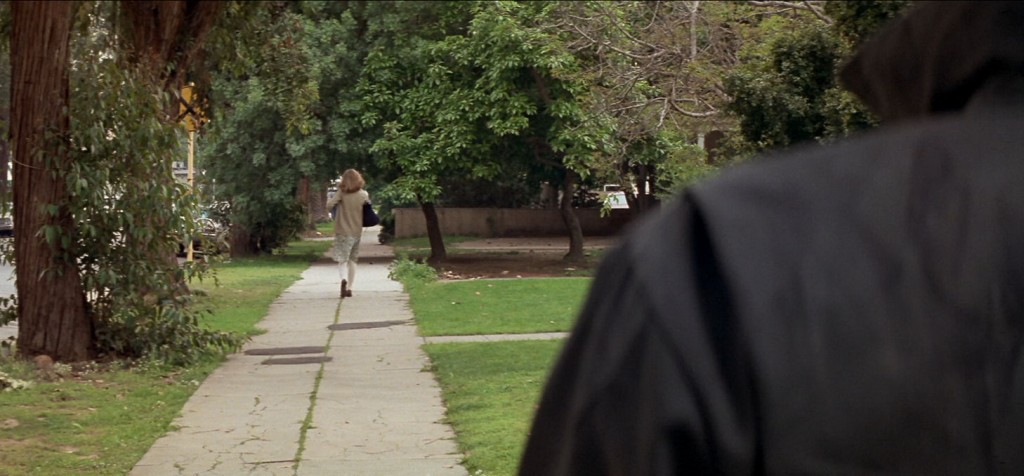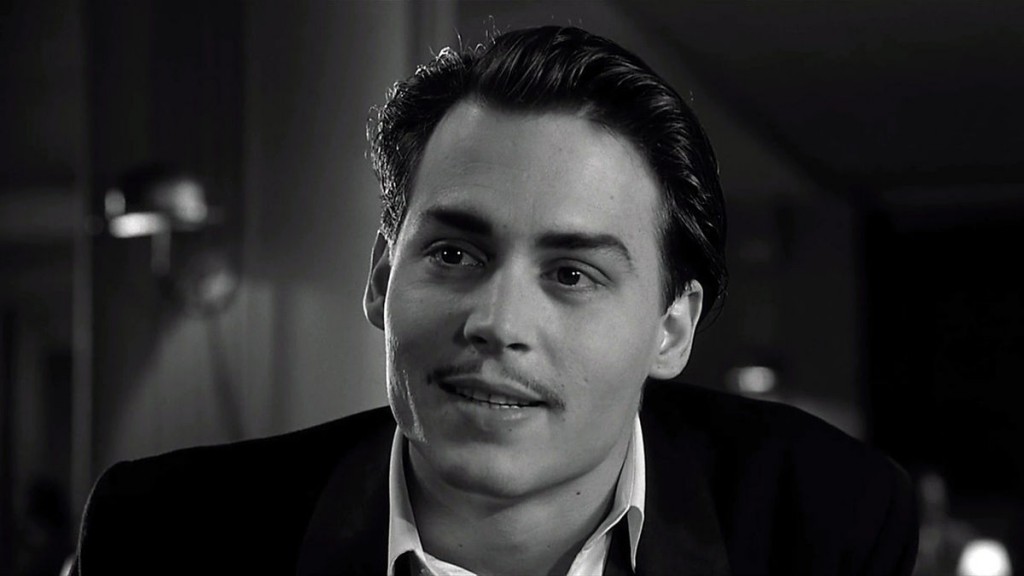-
Recent Posts
- Better Call Saul: There Are No Happy Endings between a “Rock and Hard Place”
- Black Widow Keeps It in the Family for Natasha’s Last Ride
- Loki Finds New Purpose in the Man behind the Mischief
- In its Debut, Star Wars: The Bad Batch Decides Whether to Obey or Rebel
- Nomadland: A Film Out of Time, For Our Times
Archives
Recent Comments
Meta
Category Archives: Classic Films
The Evil Dead Remains Sam Raimi’s Scariest Bloodiest DIY Triumph

The most striking thing about The Evil Dead is that, after all this time, it’s still scary as hell. Maybe that should be no great achievement: Horror movies ought to, in theory at least, still manage a few scares even on repeat viewings. But the amount of fright-inducing spectacle that writer-director Sam Raimi and company pack into eighty-five blood-soaked minutes is still remarkable for so many reasons.
Posted in Classic Films, Movies
Tagged 1980s Movies, Bruce Campbell, Film Reviews, Horror Movies, Sam Raimi
Leave a comment
Robocop: A Fable of Humanity Corrupted, Commoditized, and Restored
Robocop is a tale of corruption and dehumanization. The film examines what it means to suck the humanity out of something, replace it with a mix of technology and greed, and witness the grim results when what’s left takes hold. It is an action-packed polemic against prioritizing private profits above the public good, escalation above restraint, and lead and steel above flesh and blood.
But as I discussed on The Serial Fanaticist Podcast, it’s also a paean to the resilience of the human soul, unquenched and undeterred by whatever self-serving, nest-feathering malevolence may have been permeating corporate boardrooms in the 1980s. OCP, an evil company that wants to replace regular cops with robotic enforcers, tries to erase the identity of the man who has become its latest product, so that he‘ll be a better tool and a better soldier. And yet, the man’s connections, to his partner and his family, reawaken and sustain him despite the company’s concerted efforts to stamp both out.
Posted in Classic Films, Movies, Sci-Fi Movies
Tagged 1980s Movies, Action Movies, Film Reviews, Paul Verhoeven, Peter Weller, Robocop
Leave a comment
Back to the Future, E.T., and the Wonder of a Non-Violent Blockbuster

The modern blockbuster is built on combat. No matter what emotional depths our heroes may uncover — no matter the melodrama, deconstruction, or social commentary that emerges in their wake — there had damn well better be enough eye-popping fisticuffs to justify tugging on the producers’ purse strings.
But there’s a model, in movies like Back to the Future, Mary Poppins, and E.T., for exciting, special effects-heavy films that don’t rely on high-powered scuffles to create their spectacle and awe. Big problems that must be solved, eye-catching showcases, and great escapes can all provide a means for cinema’s auteurs to wow audiences along a different dimension. In the process, these types of movies provide an alternative to the monotony of the standard third-act action sequence and call for more imagination than the usual collision of fists and firepower.
Posted in Classic Films, Movies
Tagged Back to the Future, Blockbusters, E.T., Essays, Mary Poppins
Leave a comment
Trading Places Exemplifies the Eighties Class Comedy, for Better and for Worse
There’s something about class conflicts that lend themselves well to comedy. The snobs vs. slobs dynamic has been a venerable strain of humor on the silver screen, especially in the eighties, and Trading Places aims to take advantage of that. It presents Dan Aykroyd as a snooty stuffed shirt named Louis Winthorpe and Eddie Murphy as a street-wise hustler named Billy Ray Valentine. As I discussed on the Serial Fanaticist Podcast, Having the otherwise disparate worlds of these two men collide is a sound, time-tested recipe to wring some laughs out of the contrast between the well-heeled and the worn-heeled.
Posted in Classic Films, Movies
Tagged 1980s Movies, Comedy, Dan Aykroyd, Eddie Murphy, Movie Reviews
Leave a comment
Return to Oz Picks Mood and Metaphor over Plot and Progression on the Darker Side of the Rainbow

Conventional wisdom holds that stories should be held together by “but”s and “therefore”s instead of “and then”s. Each new scene, each beat in the narrative, should be motivated by what came before, either as cause and effect or as a change and reaction, rather than a random series of events. That approach is supposed to preserve the weight and momentum of your story, giving the actions taken and the choices made more meaning within a greater whole.
Return to Oz, however, is squarely an “and then” movie. As I discussed on the We Love to Watch Podcast, the nearly-half century late sequel to The Wizard of Oz brings back the iconic Dorothy Gale, and it shows her making a few key decisions here and there. But the film is mainly an accumulation of events that simply roll into one another, with minimal connective tissue between them. It roundly violates those dearly-held storytelling principles, which should consign it to the scrap heap of the languid or unsatisfying.
Posted in Classic Films, Movies
Tagged 1980s Movies, Dorothy Gale, Kids Movies, Movie Reviews, The Wizard of Oz
1 Comment
Groundhog Day at 25: Bill Murray Finds Freedom While Trapped in a Nightmare

It’s easy to think of science fiction and fantasy films in terms of their trappings, whether that be spaceships and lasers or swords and sorcery. But at their best, works in that genre aren’t about light speed or magic powers; they’re about thought experiments made whole, meant to probe the real world through a fictional one and to examine the human condition by stripping away the bounds of the impossible and seeing how much humanity is left.
That’s a lofty way to introduce an uproariously funny, Bill Murray-fronted comedy. But seen from that vantage point, Groundhog Day may be the sci-fi/fantasy film of the decade (with all due respect to The Matrix), despite its small-town setting and distinct lack of spells or space flights, because it uses its fantastical conceit to reveal what could, and what does, make us good.
Posted in Classic Films, Movies
Tagged Bill Murray, Comedy, Existentialism, Groundhog Day, Harold Ramis, Movie Reviews
Leave a comment
Star Wars: Revenge of the Sith Is Just The Room in Space
This December can boast the release of a pair of films from two very different franchises. The first is Star Wars: The Last Jedi, the inescapable cinematic behemoth set to capitalize on the new, Disney-fueled era of Star Wars. It’s primed to tell the next chapter of the new trilogy that began with 2015’s The Force Awakens. The second is The Disaster Artist, a movie, based on a book, based on the making of another movie. That other movie is The Room, a transcendently bad, gloriously inept film that is the modern challenger for the title of “The Worst Movie of All Time.”
And on the surface, Star Wars and The Room have nothing in common. One is set in a distant galaxy, and the other is set in San Francisco (and not even the futuristic sci-fi version of the city from Star Trek). One features magical warrior monks doing battle with laser swords, and the other features (comparatively) average people, mostly tossing footballs at one another. Star Wars shows off imaginative new technologies on a cinematic scale, and The Room includes someone secretly recording their fiancée with a Nixon-era tape recorder.
But look past those surface-level differences, draw down to the core elements of each franchise’s installments, and you’ll discover something shocking — Star Wars Episode III: Revenge of the Sith is just The Room in space. Search your feelings; you know it to be true.
Posted in Classic Films, Movies, Sci-Fi Movies
Tagged George Lucas, prequel, Revenge of the Sith, Star Wars, The Prequel Trilogy, The Room, Tommy Wiseau
Leave a comment
Ed Wood and Who Art Really Belongs To
In the wake of disquieting fan revolts over superhero films, video games, science fiction awards, and genre works of all stripes, there’s been an ensuing debate over who “owns” art. Whether you’re talking about a particular release, a broader genre, or even an entire industry, there’s an ongoing discussion to the tune of “who does this belong to?”
And the responses are legion. Is it the creative individuals behind these works? Their most ardent fans? The would-be arbiters of taste? The studios and publishers who fund them? Is it the dye-in-the-wool traditionalists or the boundary-pushing innovators? Who among these gets to decide what’s acceptable and what isn’t, let alone what’s good, great, or even art in the first place? These are questions at the heart of Ed Wood, the 1994 film from director Tim Burton.
Posted in Classic Films, Movies
Tagged Ed Wood, Johnny Depp, Martin Landau, Movie Reviews, Tim Burton
Leave a comment
Fiddler on the Roof and the Movie Behind the Myth

I’ve written about The Citizen Kane Effect — the idea that sometimes a work hailed as a classic can do something so innovative and so essential within the medium, that its techniques become woven into the fabric of how later works present themselves. As a result, modern audiences may consume the original work and walk away unimpressed because the great strides of the past have become commonplace in the present day.
But there’s another, similar phenomenon that can prove challenging to the appreciation of great art. Works within any medium or genre can become such classics that they ascend almost into myth, becoming iconic to the point that even critics and devoted fans forget about the real, warts-and-all work that once earned the lavish praise and became the fodder for that myth-making.
Posted in Classic Films, Movies
Tagged Judaism, Movie Reviews, Musicals, The Seventies
Leave a comment
Halloween’s Michael Myers and the Terror of What We Can’t Understand

To understand something is to take away its power. A look behind the curtain renders the tricks in front of it less formidable. The mechanical dinosaur isn’t as scary after the director opens it up to show us the gears and pistons that make it move. The things that we understand are less imposing, even if they are beyond our control, because they can be classified, categorized, and broken down into digestible little chunks until they no longer represent the unlimited, terrible possibilities of the unknown.
In Halloween, director John Carpenter never gives the audience a chance to fully understand the monster he crafts in celluloid. He never lets us truly know Michael Myers — what makes him tick, what produced the cold-blooded killer who emerges from the void at the film’s beginning. Indeed, through the character of Dr. Loomis, Carpenter suggests that Michael may very well be something unexplainable, something that cannot be parsed or reduced to understanding. He simply is.
And that’s a sizeable part of what gives Michael Myers so much power on the screen, so much capacity to terrorize and frighten us. Michael stands a step apart from any discernible human thought or feeling. He is simply a force, lurking in the shadows, silent, cold, and methodical as he completes his grisly labors.
Posted in Classic Films, Movies
Tagged Halloween, John Carpenter, Michael Myers, Movie Reviews, Slasher Movies, Uncanny Valley
2 Comments




